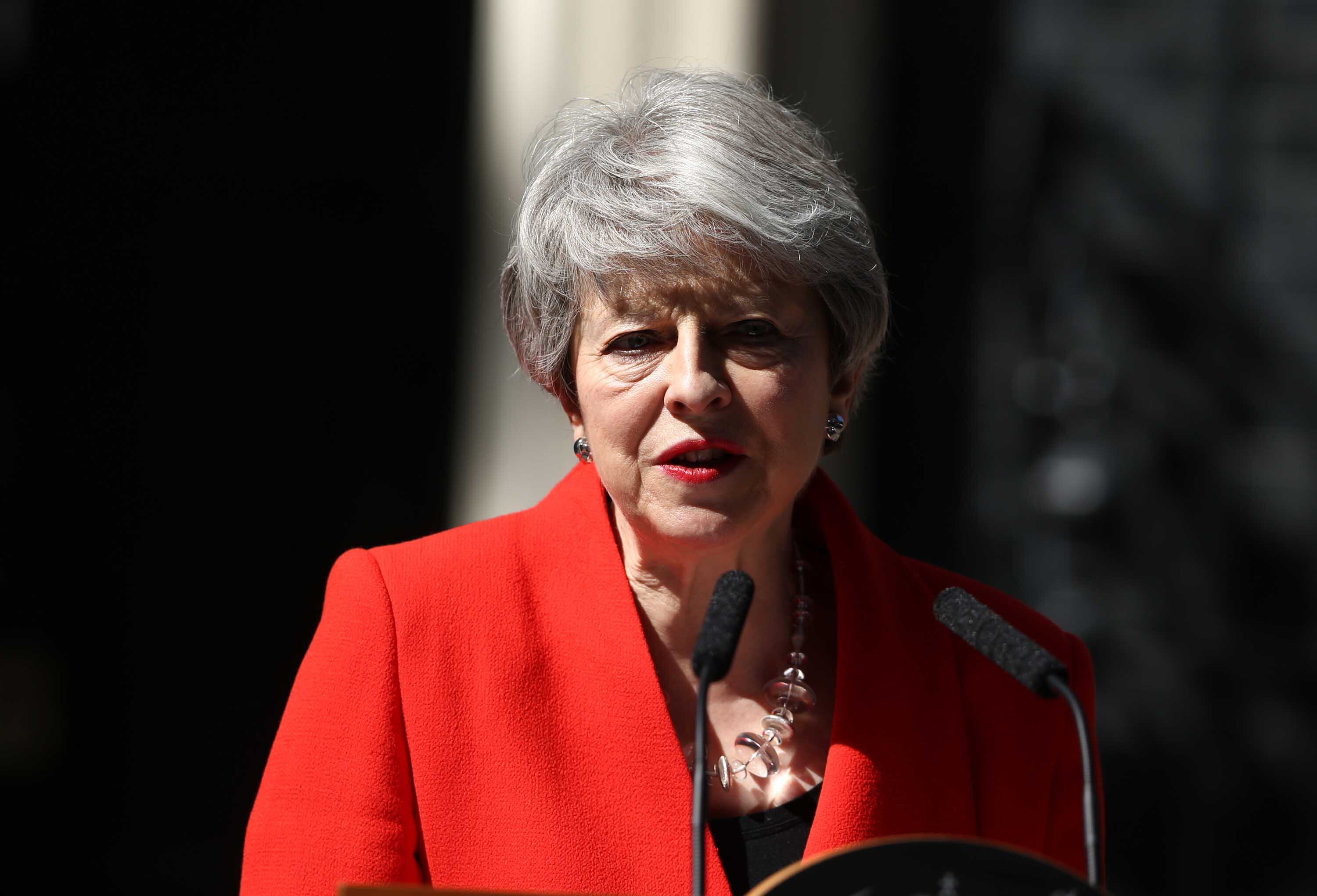
Who is Theresa May? Theresa Mary Brasier, known as Theresa May, is a prominent British politician who served as the Prime Minister of the United Kingdom from 2016 to 2019. Born on October 1, 1956, in Eastbourne, England, she has had a significant impact on British politics. May's career spans various roles, from working at the Bank of England to becoming the Conservative MP for Maidenhead in 1997. Her tenure as Prime Minister was marked by the complexities of Brexit, internal party conflicts, and significant policy reforms. Despite facing numerous challenges, May's legacy as the second female Prime Minister remains influential.
Early Life and Education
Theresa May's journey began in Eastbourne, England, where she was born into a family with strong religious roots.
- Theresa May was born on October 1, 1956, in Eastbourne, England. Her full name at birth was Theresa Mary Brasier.
- Her father, Hubert Brasier, was an Anglican vicar, and her mother, Zaidee (Barnes) Brasier, played a crucial role in her life.
- May attended St. Hugh’s College, University of Oxford, where she studied Geography from 1974 to 1977.
Personal Life
Theresa May's personal life has been marked by both joy and hardship, shaping her resilience and determination.
- In 1980, she married Philip May, whom she met through mutual friends, including Benazir Bhutto.
- May was diagnosed with Type 1 diabetes, a condition she has managed throughout her life.
- Both her parents passed away in her 20s, which had a profound impact on her life and career.
Early Career
Before stepping into the political arena, May had a career in banking and local politics.
- After graduating from Oxford, May joined the Bank of England in 1977.
- She later worked for the Association for Payment Clearing Services as an adviser on international affairs from 1985 to 1986.
- May became a councillor in the London borough of Merton from 1986 to 1994. This experience laid the groundwork for her future in national politics.
Entry into Parliament
Theresa May's entry into Parliament marked the beginning of her long and influential political career.
- In 1997, May was elected as the Conservative Member of Parliament (MP) for Maidenhead, a seat she has held ever since.
- May held various shadow secretary roles within the Conservative Party, including Shadow Secretary of State for Education and Employment from 1999 to 2001.
- She also served as Shadow Secretary of State for Transport, Local Government and the Regions from 2001 to 2002.
Home Secretary
As Home Secretary, May took on significant responsibilities and faced numerous challenges.
- In 2010, May was appointed as Home Secretary by Prime Minister David Cameron.
- During her tenure, May introduced the Data Communications Bill in 2012, which was criticized as the "Snoopers' Charter" due to its invasive surveillance provisions.
Prime Minister
Theresa May's tenure as Prime Minister was marked by the complexities of Brexit and internal party divisions.
- In July 2016, following David Cameron's resignation after the UK's vote to leave the European Union (Brexit), May was named leader of the Conservative Party and subsequently became Prime Minister.
- May became the second female Prime Minister of the United Kingdom, following Margaret Thatcher.
- One of the most critical tasks during May's premiership was leading the UK through the Brexit process.
- May's plan to preserve free trade with the European Union led to the resignations of two cabinet members, including Boris Johnson.
- Despite facing several votes of no-confidence, May managed to maintain her position as Prime Minister until her eventual resignation.
Key Challenges and Controversies
May's time in office was not without its controversies and significant challenges.
- May faced criticism for her handling of the Windrush generation, a group of Caribbean immigrants who were wrongly detained or deported due to bureaucratic errors related to immigration status.
- In June 2017, May called a snap general election to strengthen her position ahead of Brexit negotiations. However, the election resulted in a hung parliament.
- Following the 2017 general election, May engaged in coalition talks with the Democratic Unionist Party (DUP) to secure a majority in Parliament.
- May's Chequers Plan, which aimed to maintain close economic ties with the EU, was met with significant resistance from within her own party and from other EU leaders.
- May's Withdrawal Agreement, which outlined the terms of the UK's departure from the EU, was repeatedly rejected by Parliament.
- The Irish backstop, a provision designed to prevent a hard border on the island of Ireland, became a major point of contention during Brexit negotiations.
Resignation and Legacy
May's resignation marked the end of a tumultuous period in British politics, but her legacy remains significant.
- On May 24, 2019, May announced her intention to step down as Prime Minister. She formally resigned on June 7, 2019, and was succeeded by Boris Johnson.
- Despite the challenges she faced, May's legacy as the second female Prime Minister of Great Britain remains significant.
- After leaving office, May has remained active in public life, advocating for various causes and providing commentary on political issues.
Advocacy and Contributions
Even after her tenure as Prime Minister, May continues to contribute to public life through various initiatives.
- May co-founded Women2Win, an initiative aimed at increasing the number of Conservative women in Parliament.
- During her tenure as Prime Minister, May played a crucial role in shaping the Conservative Party's policies and direction.
- As Prime Minister, May engaged in various international diplomatic efforts, including meetings with world leaders and negotiations on global issues.
Policies and Reforms
May implemented several policies and reforms during her time in office, impacting various sectors.
- May implemented several economic policies aimed at boosting the UK economy, including measures to support small businesses and promote trade.
- She also introduced several social policies, such as increasing funding for mental health services and implementing measures to combat domestic violence.
- May supported education reforms aimed at improving standards in schools and universities.
- She also introduced reforms in the healthcare sector, focusing on improving patient care and reducing waiting times for medical procedures.
- As Home Secretary and later as Prime Minister, May oversaw various immigration reforms aimed at tightening border controls while ensuring fair treatment for legitimate asylum seekers.
- May implemented several security measures to enhance national safety, including increased funding for counter-terrorism efforts and improvements in cybersecurity.
- She supported environmental policies aimed at reducing carbon emissions and promoting sustainable practices.
Advocacy for Human Rights and Women's Rights
May has been a vocal advocate for human rights and women's rights throughout her career.
- Throughout her career, May has been an advocate for human rights, both domestically and internationally.
- As a champion of women's rights, May has been vocal about issues such as equal pay, reproductive rights, and combating gender-based violence.
Leadership and Public Perception
May's leadership style and public perception have been complex and multifaceted.
- May's leadership style has been characterized by her strong sense of duty and commitment to public service.
- Despite the demands of her career, May has maintained a strong personal life with her husband Philip.
- May's public perception has been complex, with some viewing her as a strong leader who navigated difficult times effectively.
- Throughout her career, May has faced extensive media scrutiny, often being subject to both praise and criticism from various quarters.
Historical Context and Challenges
May's tenure occurred during a period of significant historical change and challenges.
- May's tenure as Prime Minister occurred during a period of significant historical change, including the rise of populist movements globally.
- Her leadership within the Conservative Party was marked by internal conflicts, particularly over Brexit policies and leadership succession.
- As Prime Minister, May engaged in extensive international diplomacy efforts, including visits to key allies like the United States.
- The UK faced significant economic challenges during May's premiership, including the aftermath of the 2008 financial crisis.
- The country also experienced periods of social unrest, including protests against austerity measures and debates over immigration policies.
- Despite her resignation, May remains a significant figure in Parliament, with her legacy influencing future generations of politicians.
Theresa May's Impact and Legacy
Theresa May's journey from a local councillor to the UK's second female Prime Minister is nothing short of remarkable. Her tenure was marked by significant challenges, especially navigating the complexities of Brexit. Despite facing numerous obstacles, she demonstrated resilience and a strong sense of duty. May's efforts in areas like women's rights, healthcare, and education reforms have left a lasting impact. Her leadership style, characterized by calmness under pressure, earned her both praise and criticism. The legacy she leaves behind is significant, paving the way for future generations of women in politics. Even after stepping down, May continues to contribute to public life, advocating for various causes. Her story is a testament to dedication, perseverance, and the impact one can have on national and international stages.
Was this page helpful?
Our commitment to delivering trustworthy and engaging content is at the heart of what we do. Each fact on our site is contributed by real users like you, bringing a wealth of diverse insights and information. To ensure the highest standards of accuracy and reliability, our dedicated editors meticulously review each submission. This process guarantees that the facts we share are not only fascinating but also credible. Trust in our commitment to quality and authenticity as you explore and learn with us.


